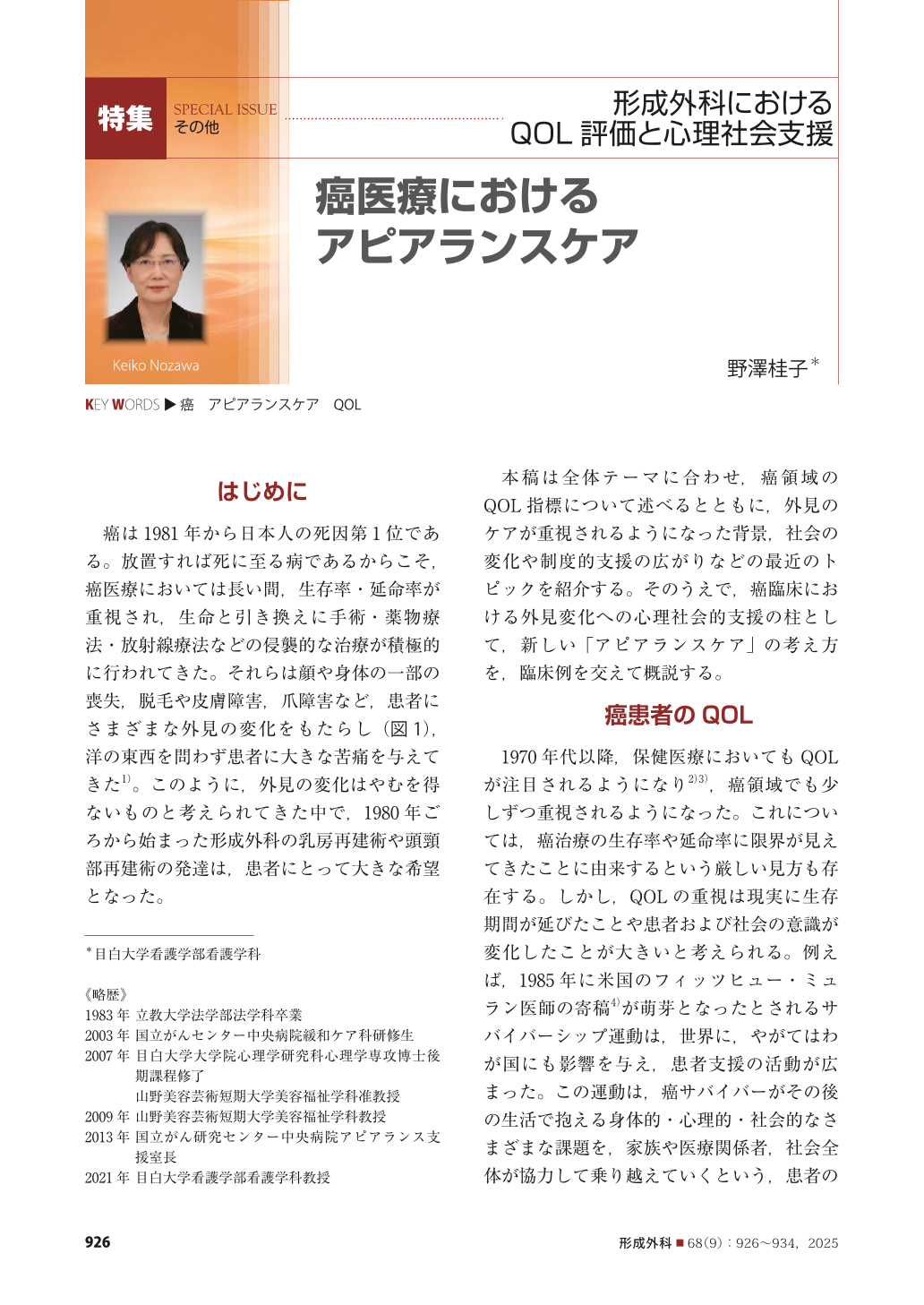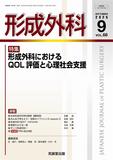Japanese
English
- 有料閲覧
- Abstract 文献概要
- 1ページ目 Look Inside
はじめに
癌は1981年から日本人の死因第1位である。放置すれば死に至る病であるからこそ,癌医療においては長い間,生存率・延命率が重視され,生命と引き換えに手術・薬物療法・放射線療法などの侵襲的な治療が積極的に行われてきた。それらは顔や身体の一部の喪失,脱毛や皮膚障害,爪障害など,患者にさまざまな外見の変化をもたらし(図1),洋の東西を問わず患者に大きな苦痛を与えてきた 1)。このように,外見の変化はやむを得ないものと考えられてきた中で,1980年ごろから始まった形成外科の乳房再建術や頭頸部再建術の発達は,患者にとって大きな希望となった。
本稿は全体テーマに合わせ,癌領域のQOL指標について述べるとともに,外見のケアが重視されるようになった背景,社会の変化や制度的支援の広がりなどの最近のトピックを紹介する。そのうえで,癌臨床における外見変化への心理社会的支援の柱として,新しい「アピアランスケア」の考え方を,臨床例を交えて概説する。
Cancer has been the leading cause of death in Japan since 1981, and since many types of cancer are fatal if left untreated, cancer treatments have long focused solely on the patientʼs survival or at least the prolongation of the patientʼs life. Invasive treatments such as surgery, drug therapy, and radiotherapy have been aggressively applied in efforts to prolong the lives of individuals with cancer. These treatments can cause various adverse changes in patientsʼ appearance, such as a loss of face or body parts, hair loss, and skin and nail disorders, frequently resulting in great suffering among patients in both the East and the West. These changes in appearance were once considered unavoidable and untreatable, but the development of breast and head and neck reconstructive surgery in plastic surgery, which began around 1980, has offered great hope to patients.
This paper describes quality-of-life indicators in the field of oncology and introduces topics such as the background of the increased emphasis on appearance care, societal changes, and the expansion of institutional support. The new concept of “appearance care” as a pillar of psychosocial support for oncology patients who are dealing with changes in their appearance is then outlined, with clinical examples.

Copyright© 2025 KOKUSEIDO CO., LTD. All Rights Reserved.


